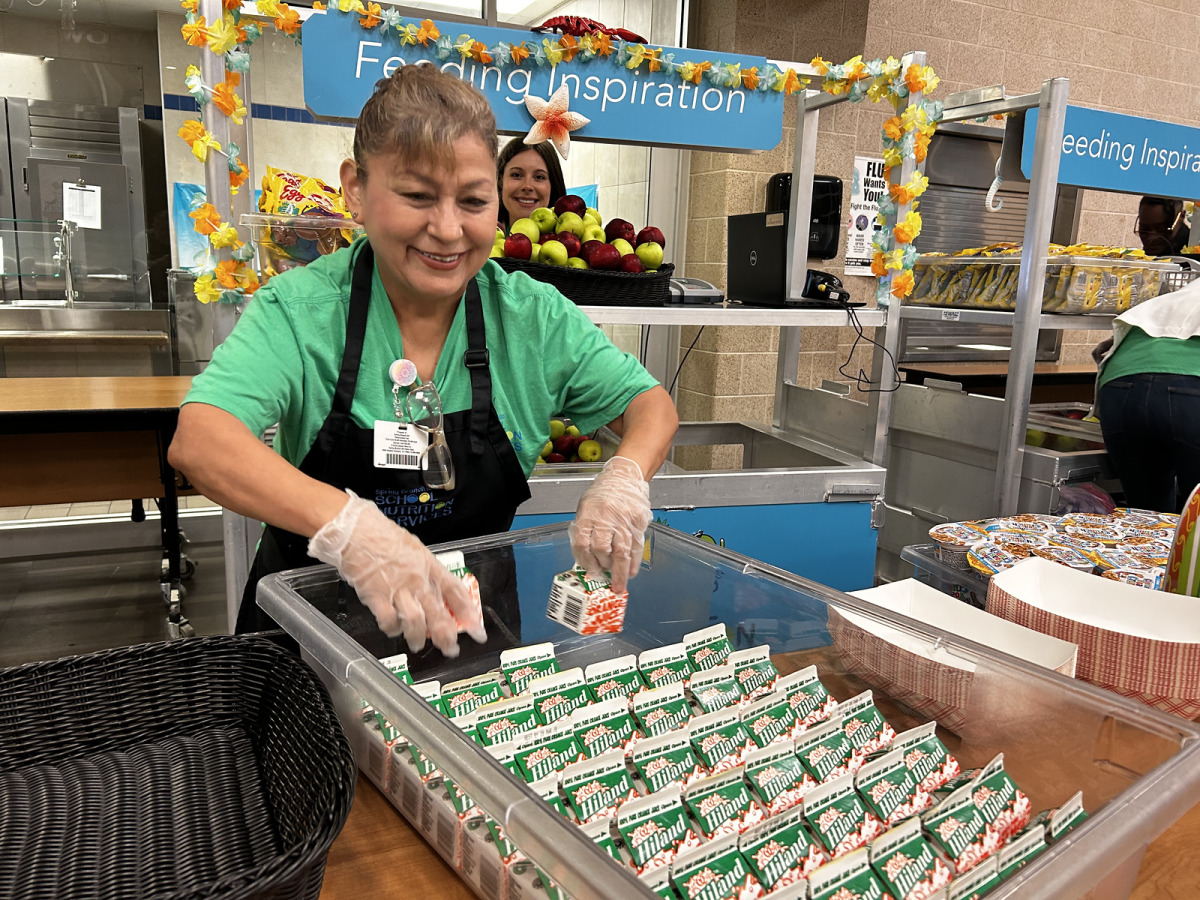Spring Branch ISD School Nutrition Services
September 25, 2024

Stepping Up to Fulfill Community Needs through the CACFP
The Child and Adult Care Food Program (CACFP) ensures nutritious meals to over 4.5 million children and adults every day. The CACFP is operated any many different settings, including child care, adult care, and emergency shelters. The CACFP also has an At-Risk Afterschool (ARAS) component that allows sites to serve children and teenagers 18 and under up to one snack and a supper. Sites are able to participate in ARAS if at least 50% of the children in the school attendance area are eligible for free and reduced-priced meals. Not only are eligible sites able to serve meals after the school day, but they can also provide a meal and snack on weekends and during school closures.
ARAS programs are run at sites such as boys & girls clubs, community centers, child care centers, and even school districts themselves. While school districts are able to serve an afterschool snack through the National School Lunch Program (NSLP), the CACFP allows them to also provide a nutritious supper.
Spring Branch ISD is one district that takes advantage of the CACFP ARAS component. Seventeen of their elementary and middle school campuses participate in the CACFP, amounting to over 1,000 suppers being served each day after school. Any children participating in an afterschool club, tutorials, or activity are able to come grab a supper from the cafeteria after the final bell rings.
For Spring Branch ISD Assistant Director of School Nutrition Services, Maggie Mae Kennedy, it was an easy decision to make the switch NSLP afterschool snack to CACFP afterschool supper. Instead of children only receiving a grain and a fruit, for example, they are able to they are able to get a complete meal that includes a meat or meat alternate, a grain, a fruit, a vegetable, and milk. Since they started serving a supper instead of just a snack, Spring Branch ISD has seen participation increase in afterschool meals.
“We have more participation with CACFP than we did with [NSLP] snacks. After the first year, we saw that more campuses and more students ate on a daily basis when it was a full meal that was offered instead of just a snack.”
Spring Branch also has some campuses that have Saturday school and NSLP does not allow meals to be served on the weekend. Through the CACFP, they are able to accommodate their community and serve a meal and snack on the weekend.
In every district she’s worked in, Maggie Mae has been an advocate for CACFP afterschool supper. To her, the benefits are clear. Children are getting more nutrients at each meal service. Schools are receiving a higher reimbursement rate than they would for NSLP snack and are able to invest that into their menu and purchase a greater variety and fresh items like seasonal produce. Nutrition and cafeteria staff are able to make additional income by working an extra shift at the end of the day.
“We were serving the afterschool snack program, so I knew there was an audience. I knew there were kids that needed food. I knew there was a community in need. For me, the snack program just doesn’t offer the same nutrients and the same meal as the CACFP does.”
The CACFP has been successful in every district Maggie Mae has worked in, because they’ve recognized the need and shown up to fill that need. In fact, Spring Branch is planning to expand the CACFP in their district. This year, they are piloting an afterschool supper program at one of the high schools and if all goes well, they will open up participation to the rest of the high schools in the district. When asked, what motivates her to continue to expand participation in CACFP ARAS, Maggie Mae responded:
“It’s just what you do, I think, when you work in child nutrition. It’s what my commitment was when I came into this industry: to feed kids healthy nutritious meals as much as possible.”
In 2023, 13.8 million children lived in food insecure households and didn’t know if there would be food on the table when they got home from school. By participating in the CACFP, schools and afterschool programs can ensure that children receive a full, healthy meal before they go home to uncertainty. Although there is a clear benefit to serving afterschool supper through the CACFP, only one child receives an afterschool supper for every sixteen who receive a free or reduced-price lunch through the NSLP. There is an opportunity for more schools to participate in At-Risk Afterschool and help close the meal gap in low-income areas where food insecurity is more prevalent.
